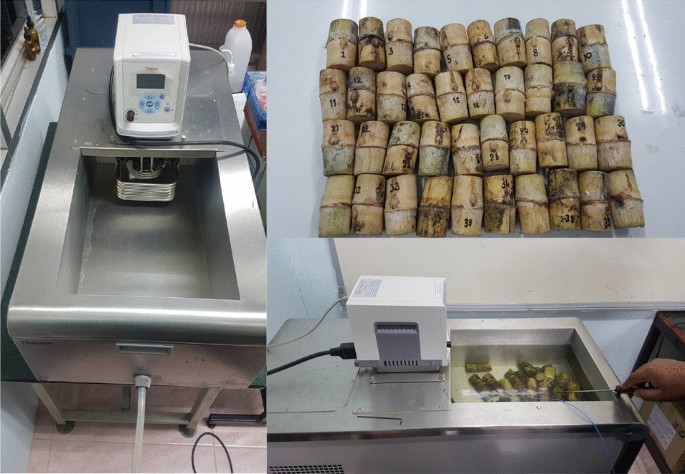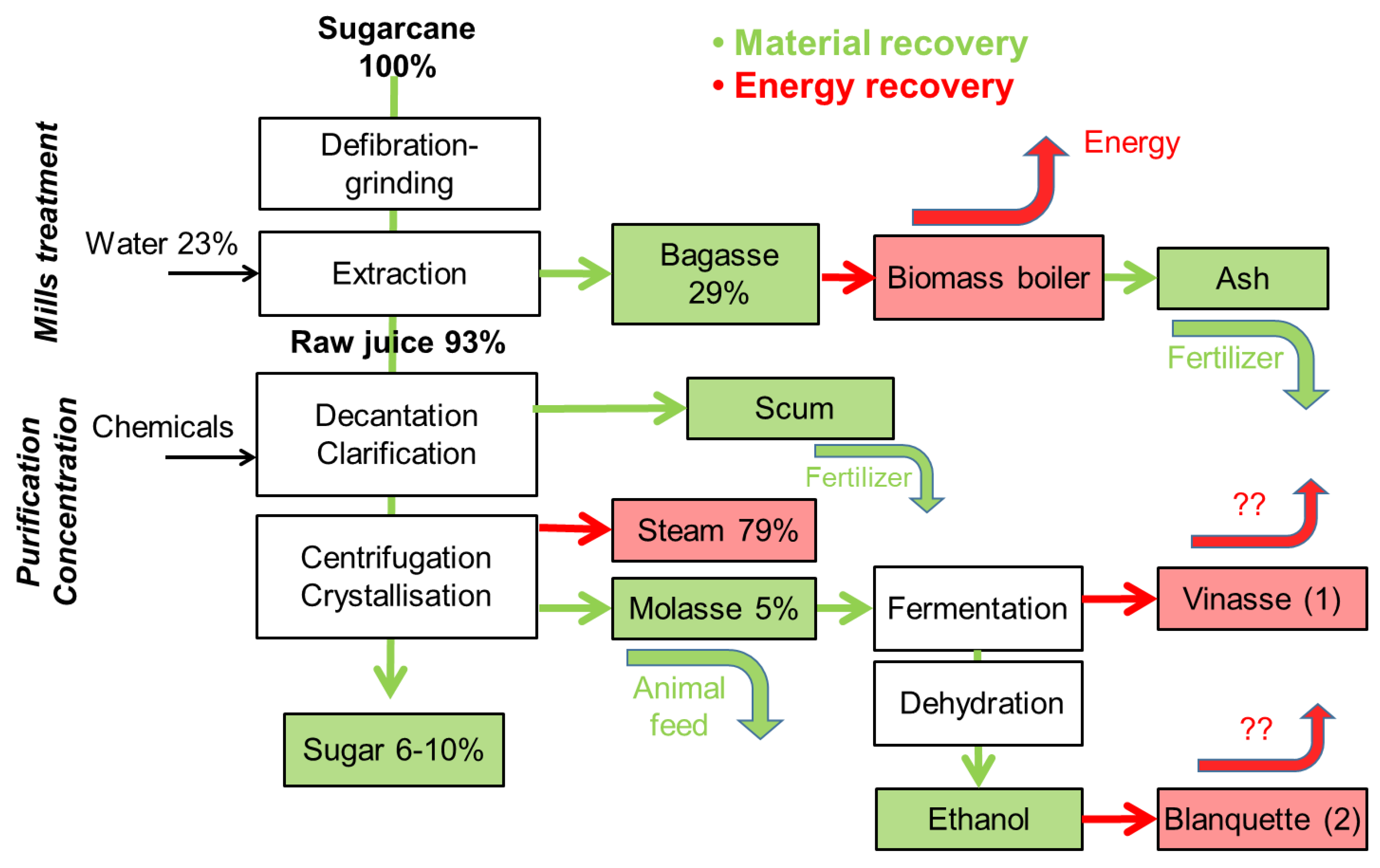Products From Sugarcane vs. Petroleum-Based Alternatives: A Comparison
Products From Sugarcane vs. Petroleum-Based Alternatives: A Comparison
Blog Article
Opening the Prospective of Products From Sugarcane: a Comprehensive Guide
The possibility of sugarcane extends far beyond its traditional use for sugar manufacturing. This overview explores the multifaceted applications of sugarcane, from energy and biodegradable materials to health items. By examining its journey from field to manufacturing facility, it reveals how sustainable practices can transform waste right into important resources. As industries look for environmentally friendly solutions, the question stays: how can these advancements reshape our technique to farming and production?

The Trip of Sugarcane: From Field to Manufacturing facility
Sugarcane undergoes a fascinating change as it travels from rich areas to busy manufacturing facilities. In the areas, the high, environment-friendly stalks are gathered, commonly by mechanical ways or hands-on labor. Once reduced, the sugarcane is promptly delivered to refining facilities to guarantee maximum freshness. At the manufacturing facility, the initial step involves crushing the walking stick to remove the wonderful juice, which includes sucrose. Products From Sugarcane. This juice is after that filtered and cleared up, eliminating impurities. Following this, it undertakes dissipation to concentrate the sugar material, bring about condensation. The resulting sugar crystals are divided from the staying molasses with centrifugation. The sugar is dried and packaged for circulation. Throughout this journey, maintaining high quality and effectiveness is essential, as the approaches employed straight impact the product's last high quality. This change not just highlights the farming importance of sugarcane however additionally its considerable duty in the global economy
Sugar and Its Derivatives: Even More Than Simply Sweet taste
The improvement of sugarcane right into polished sugar opens up the door to a wide selection of items and applications that extend past mere sweetness. Sugar and its by-products, such as molasses, brown sugar, and sugar, play essential duties in numerous markets, consisting of food, pharmaceuticals, and cosmetics. In the food market, these ingredients improve tastes, boost appearance, and serve as preservatives.Molasses, a byproduct of sugar manufacturing, is abundant in minerals and vitamins, making it a useful active ingredient in health foods and animal feed. Glucose, a simple sugar stemmed from sugarcane, serves as a considerable power resource in sporting activities nutrition and is essential in the manufacturing of confectionery. Furthermore, sugar derivatives are made use of in fermentation processes, adding to the manufacture of alcohols and various other microbial items. Overall, the flexibility of sugar and its derivatives highlights their significance beyond simple sweetness in daily life.
Biofuels: Harnessing Energy From Sugarcane

A considerable section of international biofuel manufacturing currently counts on sugarcane, acknowledged for its high power yield and efficiency in transforming sunshine right into biomass. This exotic crop functions as a key resource for ethanol, a renewable gas that can replace fuel in lorries. Sugarcane's capacity to produce even more ethanol per hectare than other feedstocks, such as corn, adds to its enhancing appeal among biofuel producers.The fermentation process of sugarcane juice or molasses generates ethanol, which can be combined with nonrenewable fuel sources to decrease greenhouse gas exhausts. In addition, by making use of the residual bagasse from sugarcane processing, power can be created with burning, additional boosting the sustainability of biofuel production. As countries look for to reduce climate change influences, sugarcane biofuels supply an encouraging solution, boosting energy protection and promoting farming sustainability while sustaining country economic climates.
Eco-friendly Plastics: The Sustainable Alternate
How can markets move to even more sustainable techniques when faced with expanding plastic air pollution? One encouraging remedy depends on biodegradable plastics stemmed from sugarcane. Unlike typical petroleum-based plastics, these bioplastics supply an environment-friendly alternative that can significantly minimize environmental impact. Made from eco-friendly resources, sugarcane-based plastics disintegrate more swiftly in different conditions, reducing landfill accumulation and aquatic debris.The production of biodegradable plastics not just addresses waste management challenges yet also lines up with the raising consumer demand for sustainable products. Industries taking on these materials can boost their brand photo while contributing to a circular economic climate. In addition, the change to naturally degradable options motivates advancement and investment in brand-new innovations, promoting a greener market landscape.As a lot more firms recognize the benefits of sugarcane-derived plastics, the potential for extensive adoption increases, paving the method for a much more sustainable future in product packaging and item layout.
Pet Feed and Fertilizers: Using Byproducts
The byproducts of sugarcane handling hold considerable potential for both pet nutrition and organic fertilizers. These by-products can be incorporated into pet original site feed, supplying important nutrients while decreasing waste. Additionally, they can act as effective natural plant food alternatives, improving dirt wellness and advertising lasting agricultural practices.
Results in Animal Nourishment
While sugarcane is mostly valued for its sucrose web content, its results play an essential duty in animal nutrition, particularly in the type of animal feed and fertilizers. The coarse residue referred to as bagasse, generated throughout the removal of juice, functions as an important resource of roughage for livestock. This high-fiber product boosts digestion and promotes total wellness in ruminants. In addition, molasses, a byproduct of sugar refining, is abundant in energy and can be utilized to supplement pet diet regimens, improving palatability and dietary worth. Vinasse, a liquid byproduct from ethanol manufacturing, includes necessary nutrients and can be utilized as a feed additive. On the whole, sugarcane results contribute considerably to lasting animal nourishment techniques.
Organic Plant Food Options
Using sugarcane byproducts prolongs beyond animal nutrition to incorporate organic plant food options that benefit farming methods. The coarse residues, such as bagasse and filter cake, offer as reliable natural plant foods, enhancing dirt health and boosting crop returns. These materials are rich in nutrients, consisting of potassium, nitrogen, and phosphorus, necessary for plant growth. When decomposed, they boost dirt framework, water retention, and microbial task, fostering a lasting farming environment. Furthermore, making use of sugarcane byproducts for fertilizing minimizes dependence on artificial fertilizers, promoting eco-friendly agricultural approaches. By recycling these by-products, farmers can add to a round economic situation while optimizing their productivity and lowering waste. This method exhibits ingenious techniques in lasting agriculture, leveraging sugarcane's complete potential.
Wellness and Health: Nutritional Advantages of Sugarcane
Many research studies highlight the dietary advantages of sugarcane, making it an important addition to a balanced diet regimen. Rich in crucial nutrients, sugarcane includes significant quantities of carbohydrates, minerals, and vitamins, particularly vitamin C, potassium, and calcium. These parts add to total health, supporting immune function and bone strength.Moreover, sugarcane is a natural resource of antioxidants, which help combat oxidative tension and swelling in the body. Its high fiber web content help in food digestion, advertising digestive tract wellness and protecting against bowel irregularity. Additionally, sugarcane juice has been connected to hydration and power replenishment, making it an outstanding option for athletes or those participating in strenuous activities.Furthermore, the glycemic index of sugarcane is fairly low, enabling an extra progressive release of energy, which might be advantageous for people handling blood sugar level levels. In general, read including sugarcane right into one's diet regimen can provide a renewing and nutritious choice for health-conscious people.
Technologies in Sugarcane Products: Future Trends and Opportunities
What innovations exist in advance for sugarcane products as sectors look for to enhance sustainability and consumer charm? The future of sugarcane items is positioned for significant innovations, driven by the need for green alternatives. Innovations in bio-based packaging, acquired from sugarcane, are acquiring grip, supplying a lasting substitute for typical plastics. Additionally, the expedition of sugarcane's bioactive substances is likely to lead to new health supplements and functional foods, exploiting on its all-natural benefits.Research into fermentation procedures might produce novel biofuels, further expanding sugarcane's energy. Additionally, the advancement of genetically changed sugarcane ranges promises enhanced returns and resistance to bugs, thereby supporting sustainable farming techniques. As consumers come to be more eco aware, the assimilation of openness in sourcing and production approaches will also play a vital duty in shaping the future of sugarcane items. Ultimately, these developments might redefine sugarcane's setting in global markets.
Frequently Asked Questions
What Are the Ecological Effects of Sugarcane Farming?
The environmental influences of sugarcane farming include logging, loss of biodiversity, dirt destruction, and water contamination - Products From Sugarcane. In addition, too much pesticide and plant food usage can hurt environments, while monoculture practices may bring about decreased strength versus environment adjustment

Exactly How Is Sugarcane Processed Into Different Products?
Sugarcane handling entails harvesting, crushing, and removing juice, which is after that cleared up and concentrated. The resulting syrup can be fermented for ethanol or taken shape for sugar, while fibers are utilized for bioenergy and various other products.

Are There Any Type Of Health And Wellness Dangers Connected With Sugarcane Intake?
The question of health dangers connected with sugarcane consumption highlights issues such as excessive sugar intake, potential allergies, and intestinal issues. Small amounts is important to alleviate these dangers while enjoying its dietary benefits.
What Are the Economic Conveniences of Sugarcane Farming?
The financial advantages of sugarcane cultivation consist of task development, enhanced farming efficiency, and contributions to neighborhood economies. Additionally, it sustains renewable resource production and provides different spin-offs that can enhance productivity within varied markets.
How Does Sugarcane Compare to Other Renewable Resources?
Sugarcane, as an eco-friendly resource, shows greater efficiency in biomass manufacturing contrasted to lots of alternatives. Its adaptability permits numerous by-products, contributing notably to lasting techniques, financial development, and reducing reliance on nonrenewable fuel sources. Glucose, a simple sugar acquired from sugarcane, serves as a substantial energy resource in sports nourishment and is crucial in the manufacturing of confectionery. Sugarcane's capability to produce even more ethanol per hectare than various other feedstocks, such as corn, contributes to its raising appeal amongst biofuel producers.The fermentation procedure of sugarcane juice or molasses generates ethanol, which can be blended with fossil fuels to lower greenhouse gas emissions. In addition, sugarcane juice has actually been connected to hydration and power replenishment, making it an excellent option for professional athletes or those engaging in laborious activities.Furthermore, the glycemic index of sugarcane is fairly reduced, permitting for a much more gradual launch of energy, which might be valuable for individuals managing blood sugar degrees. In addition, the exploration of sugarcane's bioactive substances is most likely to go to the website lead to brand-new health supplements and useful foods, taking advantage of on its all-natural benefits.Research into fermentation processes might produce novel biofuels, additionally diversifying sugarcane's energy. The question of health dangers connected with sugarcane usage highlights issues such as extreme sugar intake, possible allergic reactions, and intestinal concerns.
Report this page